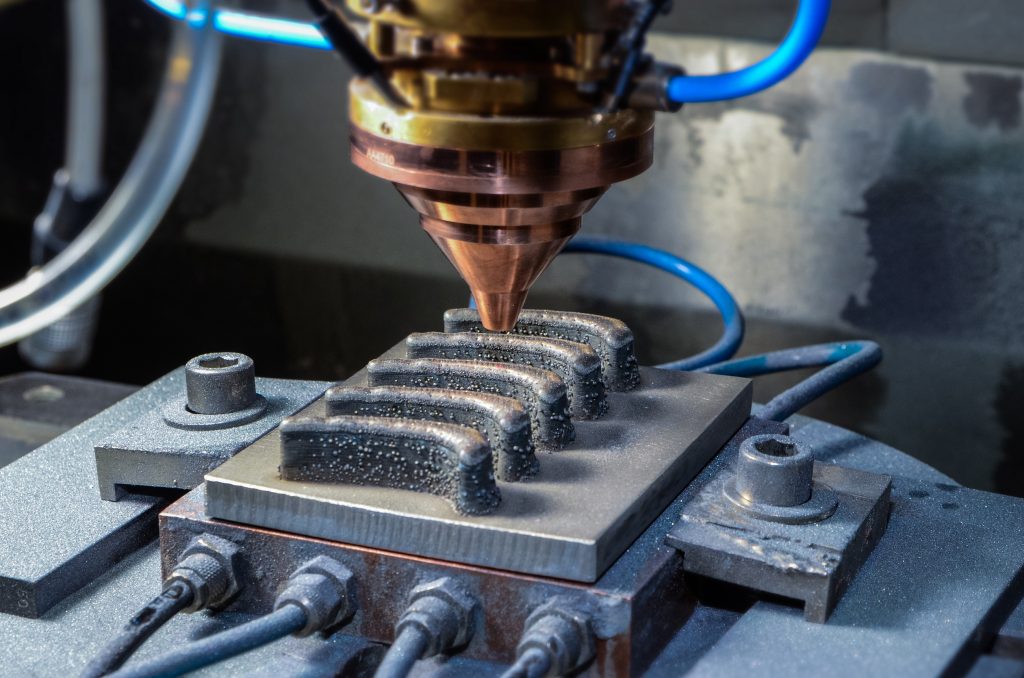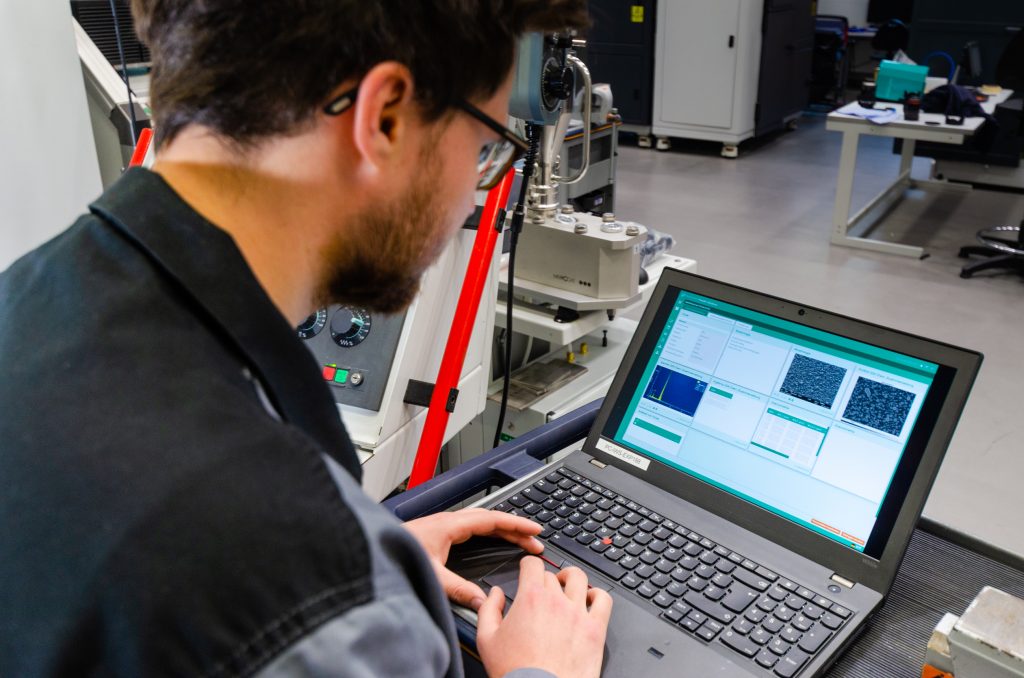In November 2017, a consortium of institutes within the Fraunhofer Society launched the futureAM Next Generation Additive Manufacturing project seeking to speed up metal 3D printing processes by a factor of ten. Over one year into the initiative the Fraunhofer Institute for Material and Beam Technology IWS, one of the project’s collaborators, has given a progress update concerning the materials discovery segment of the four part plan.
“Industry is looking for ever more and ever different materials which are, however, often difficult to process,” comments Professor Frank Brückner, Business Unit Manager Generation and Printing at Fraunhofer IWS. Through algorithmic analysis for a high throughput of material samples, the institute is gradually developing a “recipe book” of parameters, temperature and feed rate for processing challenging superalloys with a view to combining multiple metals within a single part.

Mutlimaterial metal 3D printing
The method in focus for this aspect of the futureAM project at Fraunhofer IWS is the so-called “Generative laser powder buildup welding.” A type of blown powder technology, this process is capable of high deposition rates, and can use coarser powder than those required for PBF-based methods. It can be applied to the direct fabrication of components but, as it is also possible to print on curved substrates, the method can be used for part modification and repair. According to Fraunhofer IWS, “The component size is unlimited in this procedure and the smallest lateral resolution is 30 µm.”
Steels, nickel, cobalt, titanium, aluminum, and carbide composites can be processed using laser powder buildup welding, but the team is currently working to develop intermetallic titanium aluminides and Ni-based high temperature materials. Both of these materials are particularly valuable to the aerospace industry as they have the potential to increase thrust-to-weight ratio of aircraft engines, and help engines to work more efficiently at higher temperatures. In order to make the most cost-effective high temperature components the IWS team is researching how to combine expensive and low-cost metals within the same part.
“Using laser powder buildup welding, we can feed different powders into the process zone simultaneously or successively with precisely adjustable feed rates,” explains project administrator Michael Müller, “Preferably, the expensive, highly resistant material should only be used where it gets really hot. In other areas, a less expensive material will be sufficient.”.

Artificially intelligent additive manufacturing systems
Using artificial intelligence (AI) and machine learning the IWS team is able to process numerous data points to determine how to 3D print new materials. Algorithms collect and compare Big Data collected from measured sensor values in the build process, temperature readings, and details from the institute’s powder database to evaluate process parameters. With this, the additive manufacturing system is learning how to make decisions and automatically adjust the temperature or other details to successfully produce an object in challenging materials.
Pooling their expertise with the 5 other Fraunhofer Institutes in the futureAM project, IWF is planning to integrate the intelligence into the additive manufacturing process chain with realistic components. The product of this is expected to be demonstrated by summer 2020.
This week, Fraunhofer IWS is exhibiting at LASER World of PHOTONICS in hall A2, booth 431, and RAPID.TECH + FABCON 3.D at AGENT-3D booth 2-435.
Subscribe to the 3D Printing Industry newsletter, like us on Facebook and follow us on Twitter for all the latest additive manufacturing research. Visit 3D Printing Jobs for new opportunities in additive manufacturing.
Check out this year’s 3D Printing Industry Awards winners.
Featured image shows chemical mapping of a material transition between cobalt-based alloy Merl72 to the nickel-based superalloy IN 718 (yellow: cobalt, blue: nickel, orange: aluminum). Image via Fraunhofer IWS Dresden



